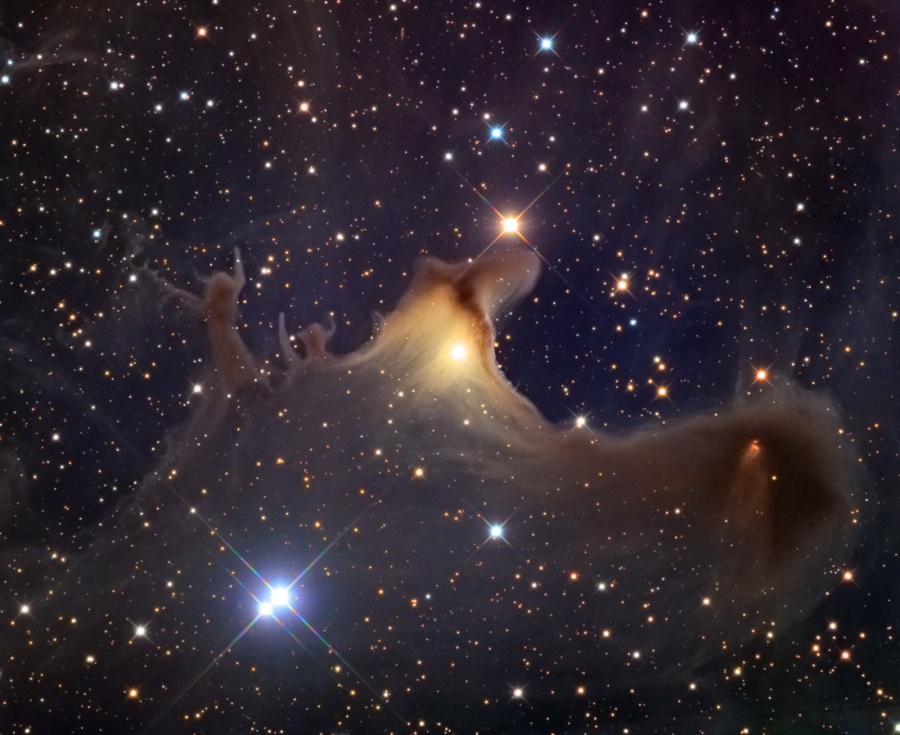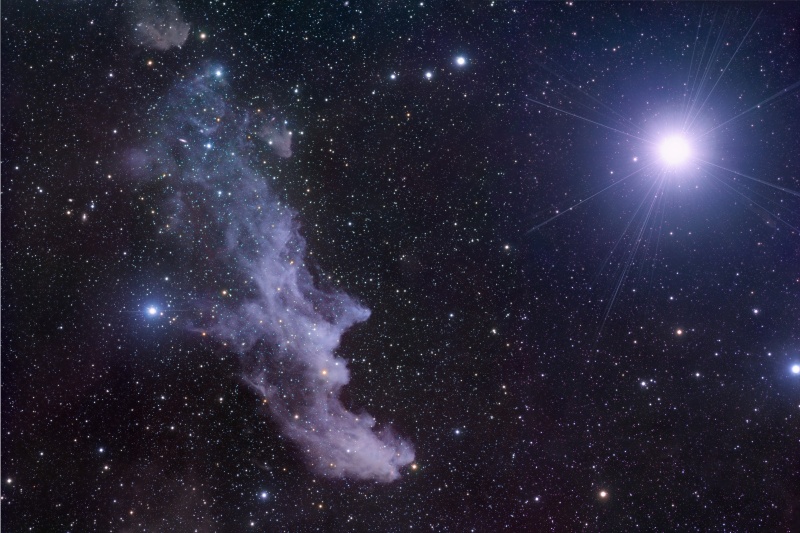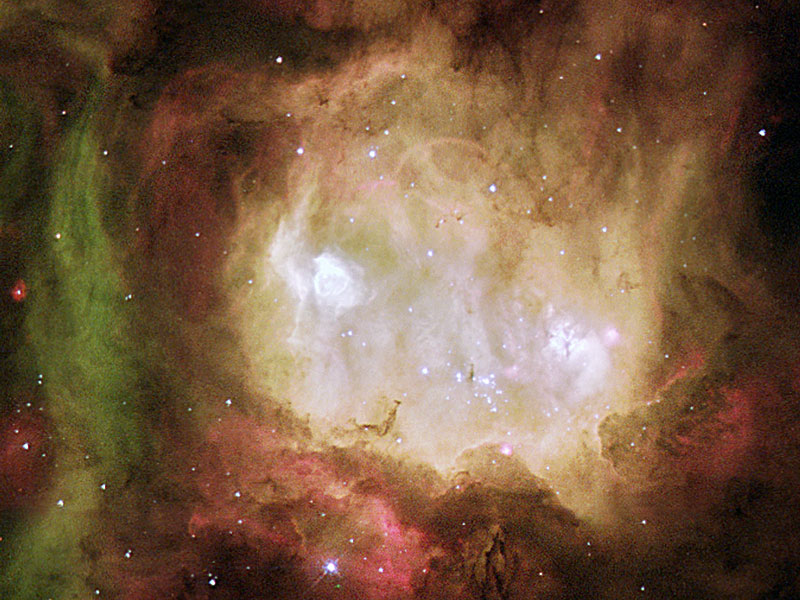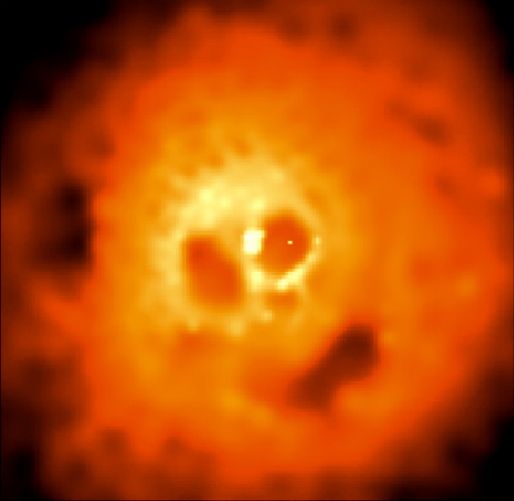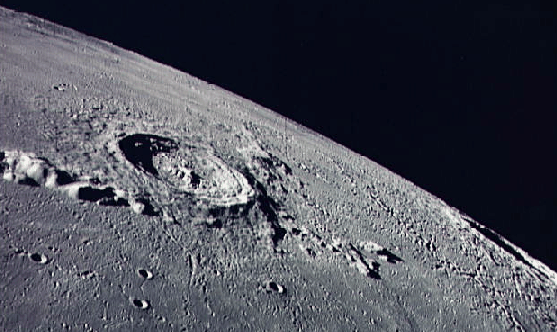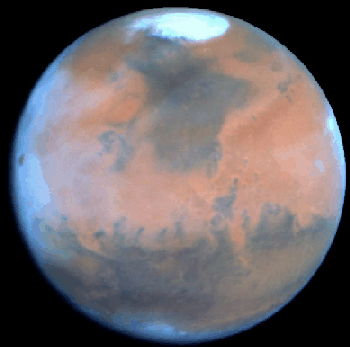| << Previous | Index | Next >> |
2014
[imghover6=http://apod.nasa.gov/apod/image/1410/DT ... en1024.jpg]http://apod.nasa.gov/apod/image/1410/DT ... otated.jpg[/imghover6]Image Credit & Copyright: David Lane
2013 What spooky planet is this? Planet Earth of course, on the dark and stormy night of September 12 at Hverir, a geothermally active area along the volcanic landscape in northeastern Iceland. Geomagnetic storms produced the auroral display in the starry night sky while ghostly towers of steam and gas venting from fumaroles danced against the eerie greenish light. Tonight, there is still a chance for geomagnetic storms triggered by recent solar activity, so high-latitude skygazers should beware. And ghostly shapes may dance in your neighborhood, too. Have a safe and Happy Halloween!
2012 Described as a "dusty curtain" or "ghostly apparition", mysterious reflection nebula VdB 152 really is very faint. Far from your neighborhood on this Halloween Night, the cosmic phantom is nearly 1,400 light-years away. Also catalogued as Ced 201, it lies along the northern Milky Way in the royal constellation Cepheus. Near the edge of a large molecular cloud, pockets of interstellar dust in the region block light from background stars or scatter light from the embedded bright star giving parts of the nebula a characteristic blue color. Ultraviolet light from the star is also thought to cause a dim reddish luminescence in the nebular dust. Though stars do form in molecular clouds, this star seems to have only accidentally wandered into the area, as its measured velocity through space is very different from the cloud's velocity. This deep telescopic image of the region spans about 7 light-years.
2011 Spooky shapes seem to haunt this starry expanse, drifting through the night in the royal constellation Cepheus. Of course, the shapes are cosmic dust clouds faintly visible in dimly reflected starlight. Far from your own neighborhood on planet Earth, they lurk at the edge of the Cepheus Flare molecular cloud complex some 1,200 light-years away. Over 2 light-years across the ghostly nebula and relatively isolated Bok globule, also known as vdB 141 or Sh2-136, is near the center of the field. The core of the dark cloud on the right is collapsing and is likely a binary star system in the early stages of formation. Even so, if the spooky shapes could talk, they might well wish you a happy Halloween.
2010 Halloween's origin is ancient and astronomical. Since the fifth century BC, Halloween has been celebrated as a cross-quarter day, a day halfway between an equinox (equal day / equal night) and a solstice (minimum day / maximum night in the northern hemisphere). With a modern calendar, however, the real cross-quarter day will occur next week. Another cross-quarter day is Groundhog's Day. Halloween's modern celebration retains historic roots in dressing to scare away the spirits of the dead. Perhaps a fitting tribute to this ancient holiday is this view of the Ghost Head Nebula taken with the Hubble Space Telescope. Similar to the icon of a fictional ghost, NGC 2080 is actually a star forming region in the Large Magellanic Cloud, a satellite galaxy of our own Milky Way Galaxy. The Ghost Head Nebula spans about 50 light-years and is shown in representative colors.
2009 Described as a "dusty curtain" or "ghostly apparition", mysterious reflection nebula VdB 152 really is very faint. Far from your neighborhood on this Halloween Night, the cosmic phantom is nearly 1,400 light-years away. Also cataloged as Ced 201, it lies along the northern Milky Way in the royal constellation Cepheus. Near the edge of a large molecular cloud, pockets of interstellar dust in the region block light from background stars or scatter light from the embedded bright star giving parts of the nebula a characteristic blue color. Ultraviolet light from the star is also thought to cause a dim reddish luminescence in the nebular dust. Though stars do form in molecular clouds, this star seems to have only accidentally wandered into the area, as its measured velocity through space is very different from the cloud's velocity. This deep telescopic image of the region spans about 7 light-years.
2008
2007 Halloween's origin is ancient and astronomical. Since the fifth century BC, Halloween has been celebrated as a cross-quarter day, a day halfway between an equinox (equal day / equal night) and a solstice (minimum day / maximum night in the northern hemisphere). With our modern calendar, however, the real cross-quarter day will occur next week. Another cross-quarter day is Groundhog's Day. Halloween's modern celebration retains historic roots in dressing to scare away the spirits of the dead. Perhaps a fitting modern tribute to this ancient holiday is the above-pictured Ghost Head Nebula taken with the Hubble Space Telescope. Appearing similar to the icon of a fictional ghost, NGC 2080 is actually a star forming region in the Large Magellanic Cloud, a satellite galaxy of our own Milky Way Galaxy. The Ghost Head Nebula spans about 50 light-years and is shown in representative colors.
2006 The dark nebula SH2-136 appears to be celebrating Halloween all of the time. The complex process of star formation create dust clouds of many shapes and sizes -- it is human perception that might identify a ghoulish creature, on the right of the above image, chasing humans. Halloween's modern celebration retains historic roots in dressing to scare away the spirits of the dead. Since the fifth century BC, Halloween has been celebrated as a cross-quarter day, a day halfway between an equinox (equal day / equal night) and a solstice (minimum day / maximum night in the northern hemisphere). With our modern calendar, however, the real cross-quarter day will occur next week. Other cross-quarter markers include Groundhog Day and Walpurgis Night.
2005 From sunset to sunrise, an unusually bright yellowish orb will hang in the sky this Halloween: Mars. Yesterday, Earth passed Mars as they orbited the Sun, bringing Mars closer than it will be for the next thirteen years. Tonight though, Mars will be nearly as bright as last night, a beacon of extraterrestrial spookiness. Opposite the Sun, Mars will rise just when the Sun sets, set just when the Sun rises, and be visible the entire night. Mars will not always be the brightest object in tonight's sky, though. Brighter than even Mars, almost spooky Venus will light up the western horizon for a brief time just after sunset. Please have a safe and happy All Hallows Eve.
2004 Halloween's origin is ancient and astronomical. Since the fifth century BC, Halloween has been celebrated as a cross-quarter day, a day halfway between an equinox (equal day / equal night) and a solstice (minimum day / maximum night in the northern hemisphere). With our modern calendar, however, the real cross-quarter day will occur next week. Another cross-quarter day is Groundhog's Day. Halloween's modern celebration retains historic roots in dressing to scare away the spirits of the dead. Perhaps a fitting modern tribute to this ancient holiday is the above-pictured Ghost Head Nebula taken with the Hubble Space Telescope. Appearing similar to the icon of a fictional ghost, NGC 2080 is actually a star forming region in the Large Magellanic Cloud, a satellite galaxy of our own Milky Way Galaxy. The Ghost Head Nebula spans about 50 light-years and is shown in representative colors.
2003 It was a dark and stormy night. But on August 29th the red planet Mars, near its closest approach to Earth in almost 60,000 years, shone brightly in the sky against a background of stars in the constellation Aquarius. In the foreground of this scary view, huge thunder clouds are lit by lightning strokes from within. Mars, of course, has nothing to do with storms on Earth, though both have the power to excite the imagination and wonder of Earthdwellers. And who knows what luminous sights you might see if you go out tonight? Have a safe and Happy Halloween!
2002 For much of the month of October, traveling shock waves from the Sun and solar wind gusts have buffeted planet Earth's magnetosphere. As a result, skywatchers at high latitudes in the northern hemisphere were treated to many displays of the aurora borealis or northern lights. For example, on the first of October this particularly ghostly apparition was photographed looming above the horizon near the town of Inari in northern Finnish Lapland. But the solar wind is dying down for now. So if you just happen to be out tonight and you see such a specter haunting your skies ... it may not be an aurora. Have a safe and happy Halloween!
2001 Halloween's origin is ancient and astronomical. Since the fifth century BC, Halloween has been celebrated as a cross-quarter day, a day halfway between an equinox (equal day / equal night) and a solstice (minimum day / maximum night in the northern hemisphere). With our modern calendar, however, the real cross-quarter day will occur next week. Another cross-quarter day is Groundhog's Day. Halloween's modern celebration retains historic roots in dressing to scare away the spirits of the dead. A perhaps-fitting modern tribute to this ancient holiday is the above-pictured Ghost Head Nebula taken with the Hubble Space Telescope. Appearing similar to the icon of a fictional ghost, NGC 2080 is actually a star forming region in the Large Magellanic Cloud, a satellite galaxy of our own Milky Way Galaxy. The Ghost Head Nebula spans about 50 light-years and is shown in representative colors.
2000 This haunting image from the orbiting Chandra Observatory reveals the Perseus Cluster of Galaxies in x-rays, photons with a thousand or more times the energy of visible light. Three hundred twenty million light-years distant, the Perseus Cluster contains thousands of galaxies, but none of them are seen here. Instead of mere galaxies, a fifty million degree cloud of intracluster gas, itself more massive than all the cluster's galaxies combined, dominates the x-ray view. From this angle, voids and bright knots in the x-ray hot gas cloud lend it a very suggestive appearance. Like eyes in a skull, two dark bubbles flank a bright central source of x-ray emission. A third elongated bubble (at about 5 o'clock) forms a toothless mouth. The bright x-ray source is likely a supermassive black hole at the cluster center with the bubbles blown by explosions of energetic particles ejected from the black hole and expanding into the immense gas cloud. Fittingly, the dark spot forming the skull's "nose" is an x-ray shadow ... the shadow of a large galaxy inexorably falling into the cluster center. Over a hundred thousand light-years across, the Perseus Cluster's x-ray skull is a bit larger than skulls you may see tonight. Have a safe and happy Halloween!
1999 Three thousand light-years away, a dying star throws off shells of glowing gas. This image from the Hubble Space Telescope reveals The Cat's Eye Nebula to be one of the most complex planetary nebulae known. In fact, the features seen in the Cat's Eye are so complex that astronomers suspect the bright central object may actually be a binary star system. The term planetary nebula, used to describe this general class of objects, is misleading. Although these objects may appear round and planet-like in small telescopes, high resolution images reveal them to be stars surrounded by cocoons of gas blown off in the late stages of stellar evolution. On planet Earth, of course, cats and other creatures may be on the prowl tonight. Keep your eyes peeled and have a safe and happy Halloween!
1998 This picture, taken as the Apollo 17 astronauts orbited the Moon in 1972, depicts the stark lunar surface around the Eratosthenes and Copernicus craters. Images of a Moon devoid of life are familiar to denizens of the space age. Contrary to this modern perception, life on the Moon was reported in August of 1835 in a series of sensational stories first published by the New York Sun - apparently intended to improve the paper's circulation. These descriptions of lunar life received broad credence and became one of the most spectacular hoaxes in history. Supposedly based on telescopic observations, the stories featured full, lavish accounts of a Moon with oceans and beaches, teeming with plant and animal life and climaxing with reported sightings of winged, furry, human-like creatures resembling bats ! Within a month the trick had been revealed but the newspaper continued to enjoy an increased readership. For now ... have a safe and happy Halloween !
1997 This Halloween, the news about Mars is good news - Mars Global Surveyor will resume aerobraking into a mapping orbit around the haunting red planet. Wide angle cameras onboard the spacecraft recently recorded this shadowy image of Olympus Mons, the Solar System's largest volcano, from an altitude of over 100 miles. The summit depression or caldera of Olympus Mons is about 40 miles across and 15 miles above the Martian surface. On Halloween Night in 1938, Mars also made the news when Orson Welles' radio theatre adaptation of H.G. Wells' "War of the Worlds" - a fictional account of invaders from Mars - was dramatized as a live news report. The performance was so convincing it tricked some listeners, but most who heard the broadcast felt it was a treat. Have a happy and safe Halloween!
1996 The above photo, taken as the Apollo 17 astronauts orbited the Moon in 1972, depicts the stark lunar surface around the Eratosthenes and Copernicus craters. Many similar images of a Moon devoid of life are familiar to denizens of the space age. Contrary to this modern perception, life on the Moon was reported in August of 1835 in a series of sensational stories first published by the New York Sun - apparently intended to improve the paper's circulation. These descriptions of lunar life received broad credence and became one of the most spectacular hoaxes in history. Supposedly based on telescopic observations, the stories featured full, lavish accounts of a Moon with oceans and beaches, teeming with plant and animal life and climaxing with the report of sightings of groups of winged, furry, human-like creatures resembling bats! Within a month the hoax had been revealed but the newspaper continued to enjoy an increased readership. Though barren, the Moon remains a popular setting for science fiction stories and extra-terrestrial adventures.
1995 Orson Welles became an instant legend on Halloween in 1938 for his radio dramatization of H.G. Wells' "War of the Worlds". Some listeners who did not realize it was a theatrical production were driven to near panic by this fictional account of invaders from Mars. In the story, as in the above Hubble Space Telescope image, Mars was at "opposition", its point of closest approach to the Earth, a distance of some 65 million miles. For the Martians, it was imagined that this was a good time to invade. For astronomers, opposition is a good time to study the red planet and this HST image, represents the clearest view of Mars ever for an Earth telescope. The icy north polar cap is visible at the top of the picture as well as a veil of white clouds along the planet's left edge. The dark markings represent areas where the reddish tinged dust characteristic of the surface has been blown away by the Martian winds.
| << Previous | Index | Next >> |


